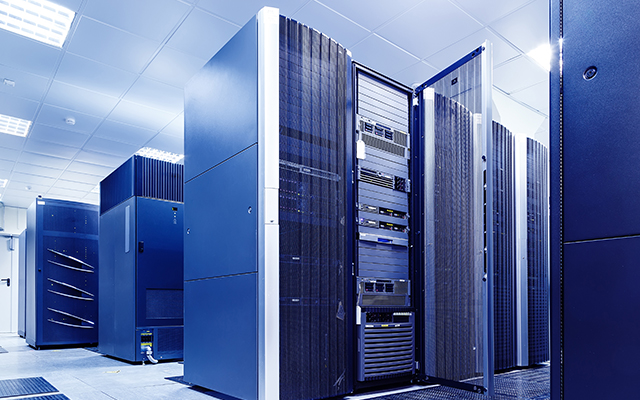
When moving applications to the cloud, or creating new cloud-native apps, the database that stores your information is vitally important, and this should be a core decision that drives the application design.
This article provides a technical review of the cloud-based database offerings from Alibaba Cloud, Oracle, and IBM. We’ll look at both SQL and NoSQL options.
Cloud Database Overview
More and more companies are building cloud-native applications and migrating workloads from internal data centers to the public cloud for all the benefits moving to the cloud offers.
Any application has data it collects and generates, which needs to be stored then retrieved at a later time, and to be reported on or displayed for the application client. Databases have long been the solution for storing and retrieving data at scale. Every cloud provider has a database offering that can be used as a base.
Alibaba Cloud, IBM Cloud, and Oracle Cloud all have traditional SQL-based RDBMS (relational database management systems) available as of this writing. Only IBM Cloud and Alibaba Cloud have NoSQL offerings; Oracle Cloud NoSQL has not been launched yet.
SQL Database Options
IBM Cloud’s database as a service (DBaaS) is DB2 on Cloud. This service is based on the latest version of DB2. DB2 is most often seen within organizations that already have an investment in IBM software and hardware, and is the sixth most popular database platform in use.
The Oracle Cloud DBaaS is named Oracle Cloud Database. The service runs one of several versions of Oracle’s database software depending on your requirements. Unlike most cloud database providers, Oracle allows clients to use older releases of its database software which is appealing to enterprises that want to experiment with moving existing applications. Oracle is also the most widely used database in the world.
Alibaba Cloud has three different databases available under its ApsaraDB for RDS product. Depending on your requirements and preference, the choices are MySQL, PostgreSQL, and Microsoft SQL Server. MySQL is available in all 16 regions; PostgreSQL and Microsoft SQL Server are available in 13 regions. MySQL, Microsoft SQL Server, and PostgreSQL are the second, third, and fourth most popular database platforms in use today.
Technical Similarities:
-Relational database management system that supports ACID transactions.
-Uses tables with rows and columns
-Supports primary keys and secondary indexes
-Triggers and Storage Procedures are supported
-SQL syntax for interacting
-JDBC and ODBC support
-Has clients for a wide variety of languages including C/C++, C#, Node.js, Java, PHP, Python, and Ruby
-XML Query support
The differences in the five databases available are extremely varied and depend on application requirements and any existing requirements. A comparison of the three databases used most often in enterprises is available on db-engines.com: DB2 vs SQL Server vs Oracle.
Most new applications being developed as cloud-native, using containers, and built on a microservices architecture are using MySQL or PostgreSQL to hit the ground running. These database platforms have proven their ability to support applications as they scale out and support millions or billions of users. At some point all application architectures need to be revisited and potentially migrated to other platforms for specific features, but there is no reason to start with the more expensive and “high-end” solutions available in the cloud today.
NoSQL Database Options
IBM’s service is Cloudant, which is a proprietary offering that is only available as part of IBM’s hosted service.
Alibaba Cloud has an ApsaraDB for MongoDB product which is based on MongoDB, the top open source NoSQL database in use, and fifth most popular database software in use.
Similarities:
-Document-based using JSON
-Allow primary and secondary indexes
-Official support for Java, Node.js, Python, and Swift
-Support sharding for high availability and performance scaling
-Service includes backup and restore functionality
Differences:
IBM Cloudant
-Native REST API
-Triggers
Alibaba Cloud ApsaraDB for MongoDB
-Supports client libraries for 10+ languages
-Supports ReplicaSet in addition to sharding as a clustering option
-Available for as low as $0.04 USD per hour
Cloud Regions Available
Alibaba Cloud, IBM Cloud, and Oracle Cloud are three of the four visionaries in the Gartner 2017 Cloud Infrastructure as a Service Magic Quadrant, designating all their platforms among the top tier of global players.
IBM and Oracle both have strong presences in the private cloud space within large enterprises. IBM is by far the leader in this category. Oracle has eight active cloud regions with more planned. IBM has five data centers designated to host public cloud services out of their over 60 data centers available globally.
Alibaba Cloud is focused on being a top-tier public cloud provider. It has a larger footprint of public cloud regions than IBM or Oracle with 16 data centers globally; nine of them are outside of China. Alibaba Cloud is also the fastest growing of these three.
Conclusion
All three cloud database providers listed in this article will be able to support your general-purpose cloud platform needs. The selection of a database service provider can be based as much on personal preference as limitations that the development project has defined (like requiring JDBC). The industry has been trending towards open-source based solutions like MongoDB, MySQL, and PostgreSQL over the last couple of years, and these options are all available on Alibaba Cloud. To get started today, Alibaba Cloud offers a $300 credit for new users, which provides the opportunity to discover how easily Alibaba Cloud RDS will work with the rest of your application development software stack.
Bio
Vincent Power
Vince Power is an Enterprise Architect at Medavie Blue Cross. His focus is on cloud adoption and technology planning in key areas like core computing (IaaS), identity and access management, application platforms (PaaS), and continuous delivery.